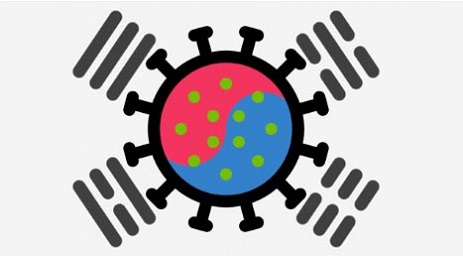Korea seeking COVID-19 treatments for 260,000 as COVID-19 hospitalizations hits 1,357 and pediatric cases rises
Nikhil Prasad Fact checked by:Thailand Medical News Team Aug 16, 2024 8 months, 1 week, 10 hours, 8 minutes ago
COVID-19 News: South Korea is once again facing a significant surge in COVID-19 cases, driven by a new wave of infections fueled by the Omicron subvariant KP.3. and its various sub-lineages including KP.3.1.1. This summer wave has led to a marked increase in hospitalizations and a rise in pediatric cases, prompting health authorities to take swift and decisive actions to mitigate the spread. As the nation braces for the peak of this wave, expected later in August, the Korea Disease Control and Prevention Agency (KDCA) has announced a comprehensive plan to supply treatments for 260,000 COVID-19 patients, among other preventive measures.
 Korea seeking COVID-19 treatments for 260,000 as COVID-19 hospitalizations
Korea seeking COVID-19 treatments for 260,000 as COVID-19 hospitalizations
hits 1,357 and pediatric cases rises
Treatment Supplies for 260,000 Patients
In response to the rising number of COVID-19 cases, the KDCA revealed plans to supply treatments for 260,000 patients nationwide. Park Ji-young, a senior official from the KDCA told
COVID-19 News journalists that the agency had begun contacting global pharmaceutical companies to secure necessary treatments. “We have recognized the growing demand for treatments and have acted promptly to ensure their availability,” Park stated. The KDCA expects the supply to begin this week, with full distribution across the country by the end of the month. This move comes as the agency prepares to administer vaccines specifically targeting the KP.3 subvariant, which accounted for 45.5 percent of cases in South Korea last month.
Rising Hospitalizations Amid Summer Wave
As of the second week of August, the number of hospitalized COVID-19 patients had surged to 1,357, marking the highest level recorded this year. This increase in hospitalizations is primarily among older adults, with the majority of patients being over the age of 65. The KDCA, however, reassures the public that the current wave does not indicate a significant rise in critically ill patients or fatalities compared to previous waves. The fatality rate has remained stable at 0.1 percent since 2022, with a rate of less than 0.01 percent for those aged 50 and below - similar to or even lower than the seasonal flu.
Concerns Over Hidden Spread and Data Collection Challenges
The recent surge in infections has also raised concerns about hidden and unchecked community spread, exacerbated by reduced data collection from government agencies and a decline in testing rates. Since the beginning of July, health authorities have reported a steady rise in cases as part of this summer wave. However, the government's decision to scale back its data collection efforts and the public's reduced testing have made it challenging to track the virus's spread accurately.
Many individuals now mistake COVID-19 symptoms for the common cold, given the similar manifestations such as a runny nose, cough, or sore throat. Furthermore, corporate policies requiring infected employees to continue working with facial coverings instead of allow
ing them to work from home have contributed to the virus's spread. With most containment measures scrapped since May 2023, when South Korea exited the state of COVID-19 national emergency, the KDCA now only advises a five-day self-isolation period for those diagnosed, down from the previous mandatory seven-day period.
Pediatric Cases on the Rise
Alarmingly, the number of pediatric COVID-19 patients has seen a sharp increase, according to data from the Korea Children's Hospital Association. Between August 5 and 9, 1,080 children were hospitalized with COVID-19, compared to just 387 between July 22 and 26. The Chungcheong provinces, in particular, have experienced a dramatic rise in pediatric cases, with the number of child patients increasing from 54 to 301 during the same period.
“Most pediatric COVID-19 patients are asymptomatic or exhibit only mild symptoms, which allows the virus to spread more easily,” explained Choi Yong-jae, the president of the Korea Children's Hospital Association. He emphasized that children with underlying health conditions, such as heart disease or diabetes, should seek additional testing and treatment if they test positive for COVID-19.
Government's Multi-Pronged Approach to Curb the Spread
To combat this renewed wave, South Korean health authorities have implemented several measures. The Ministry of Food and Drug Safety is closely monitoring the supply and distribution of self-testing kits, with manufacturers planning to produce over five million kits by the end of August. Additionally, the KDCA is coordinating with the Education Ministry to recommend that students with COVID-19 symptoms recover at home, aiming to prevent further spread in schools.
In October, the KDCA plans to administer additional COVID-19 and influenza vaccines simultaneously, targeting the most vulnerable populations. Moreover, the government has established a consultative body with experts to regularly discuss the virus's trends and necessary antivirus measures. This body, which held its first meeting on August 13, is closely monitoring the virus's mutations, hospitalization trends, and developments overseas.
Experts Urge Public Adherence to Preventive Measures
Healthcare experts have repeatedly stressed the importance of adhering to preventive measures to control the spread of the virus. The current summer surge is likely driven by increased indoor activities during the vacation season, coupled with the rapid spread of the KP.3 variant. Experts are warning the general population to adopt more preventive measures besides masking and for those in the vulnerable groups to self-isolate and to avoid crowded settings.
For the latest
COVID-19 News, keep on logging to Thailand Medical News.
Read Also:
https://www.thailandmedical.news/news/india-downplays-covid-19-threat-despite-several-states-crossing-5-percent-positivity-rate
https://www.thailandmedical.news/news/sars-cov-2-kp-3-1-1-and-influenza-causing-a-rise-in-respiratory-infections-across-bulgaria
